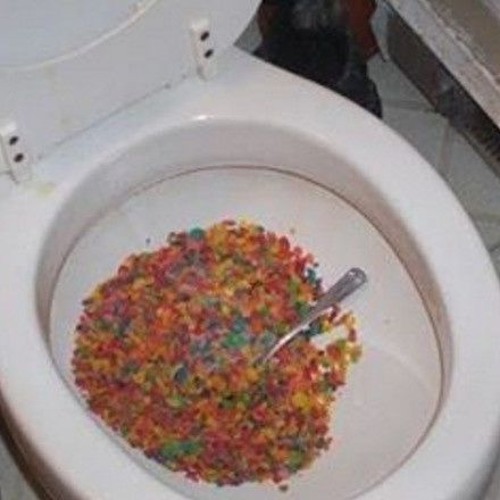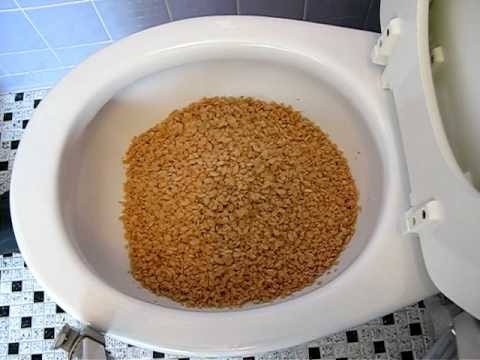We've discovered this post relating to Think Twice Before Flushing Food Down Your Toilet down the page on the web and concluded it made perfect sense to write about it with you on this page.

Introduction
Lots of people are frequently confronted with the problem of what to do with food waste, particularly when it concerns leftovers or scraps. One usual concern that develops is whether it's all right to purge food down the commode. In this article, we'll look into the reasons that individuals may think about flushing food, the consequences of doing so, and alternative techniques for correct disposal.
Reasons that individuals might take into consideration purging food
Absence of understanding
Some people might not understand the potential harm triggered by flushing food down the commode. They may erroneously believe that it's a harmless method.
Comfort
Purging food down the toilet might appear like a fast and easy service to disposing of unwanted scraps, especially when there's no close-by trash can available.
Idleness
In some cases, individuals might just select to flush food out of sheer laziness, without taking into consideration the repercussions of their actions.
Repercussions of flushing food down the toilet
Environmental influence
Food waste that ends up in waterways can contribute to pollution and harm marine ecosystems. Furthermore, the water utilized to flush food can stress water resources.
Pipes concerns
Flushing food can result in stopped up pipes and drains, causing pricey pipes repairs and inconveniences.
Sorts of food that need to not be flushed
Coarse foods
Foods with fibrous appearances such as celery or corn husks can obtain tangled in pipelines and cause clogs.
Starchy foods
Starchy foods like pasta and rice can take in water and swell, leading to blockages in pipes.
Oils and fats
Greasy foods like bacon or food preparation oils must never be flushed down the toilet as they can strengthen and trigger blockages.
Appropriate disposal methods for food waste
Utilizing a garbage disposal
For homes equipped with waste disposal unit, food scraps can be ground up and flushed through the pipes system. However, not all foods are suitable for disposal in this way.
Recycling
Specific food packaging materials can be reused, lowering waste and decreasing environmental impact.
Composting
Composting is a green way to get rid of food waste. Organic materials can be composted and utilized to enrich soil for gardening.
The relevance of appropriate waste management
Decreasing environmental injury
Proper waste monitoring techniques, such as composting and recycling, aid minimize contamination and protect natural resources for future generations.
Protecting plumbing systems
By avoiding the method of flushing food down the bathroom, property owners can prevent expensive plumbing fixings and maintain the stability of their pipes systems.
Conclusion
Finally, while it may be appealing to flush food down the bathroom for convenience, it's important to comprehend the prospective effects of this activity. By adopting proper waste management methods and throwing away food waste sensibly, people can add to much healthier plumbing systems and a cleaner environment for all.
FLUSH FOOD DOWN THE TOILET?
FLUSHING FOOD CAN CAUSE BLOCKED DRAINS IN YOUR HOME
All of the plumbing fixtures in your home are connected to the same sewer pipe outside of your home. This outdoor sewer pipe is responsible for transporting all the wastewater from your home to the Council sewer mains. Even small pieces of food that go down the kitchen sink can cause problems for your sewer. It should therefore be obvious that flushing larger bits of food, such as meat, risks a clog in either the toilet itself or the sewer pipes. Flushing greasy food is even more problematic because oil coagulates when it cools, coating the interior lining of your pipes.
THE TOILET IS NOT A BIN
Food isn’t the only thing that people shouldn’t be flushing down the toilet. People use the toilet to dispose of all kinds of things such as tampons, makeup wipes, dental floss, kitty litter and even underwear. Water goes to great lengths to educate residents about the high costs and stress placed on wastewater treatment systems simply from people flushing the wrong stuff down the toilet. It costs taxpayers millions of dollars each year, and homeowners thousands in blocked drain repairs.
FLUSHING FOOD IS A WASTE OF WATER
Flushing food is a waste of our most precious resource - water. In June this year Level 1 water restrictions were introduced to protect water supply from drought conditions. Much of New South Wales continues to be affected by prolonged drought with recent figures revealing up to 97 per cent of the state remains in drought. Depending on whether you have a single or dual flush toilet, every single flush uses between five and 11 litres of water. In the current climate this is a huge amount of water to be wasting on flushing food that should be placed in the bin (or better yet, the compost).
https://www.jabplumbingsolutions.com.au/blog/can-you-flush-food-down-the-toilet

Do you like reading about Flushing Food Down the Toilet?? Post a remark down the page. We'd be delighted to see your suggestions about this blog posting. Hoping that you visit us again later on. Loved our blog? Please quickly share it. Let somebody else find it. We appreciate your readership.
Check This Out